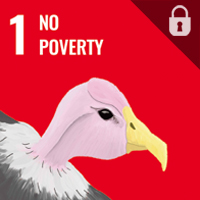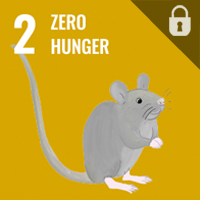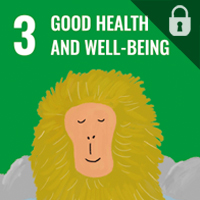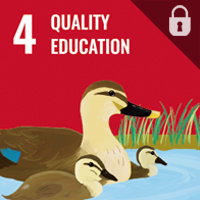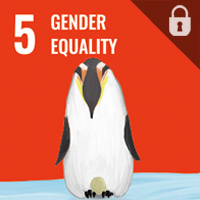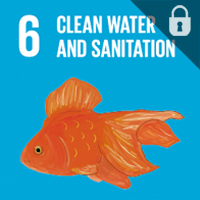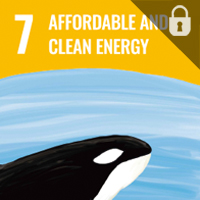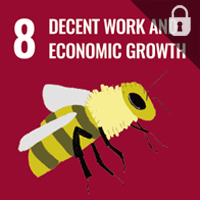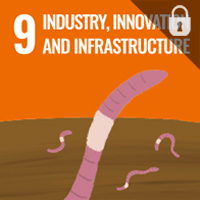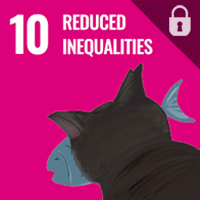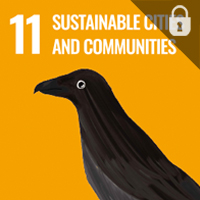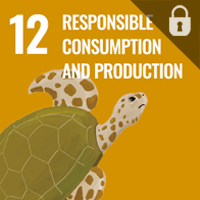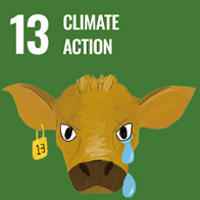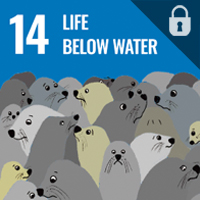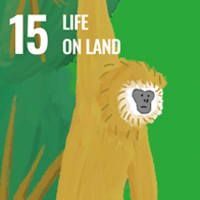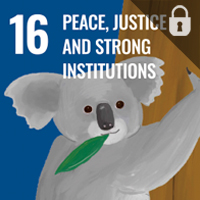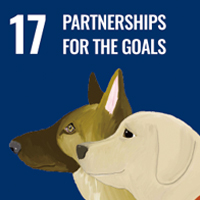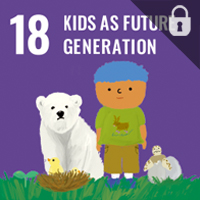Vision
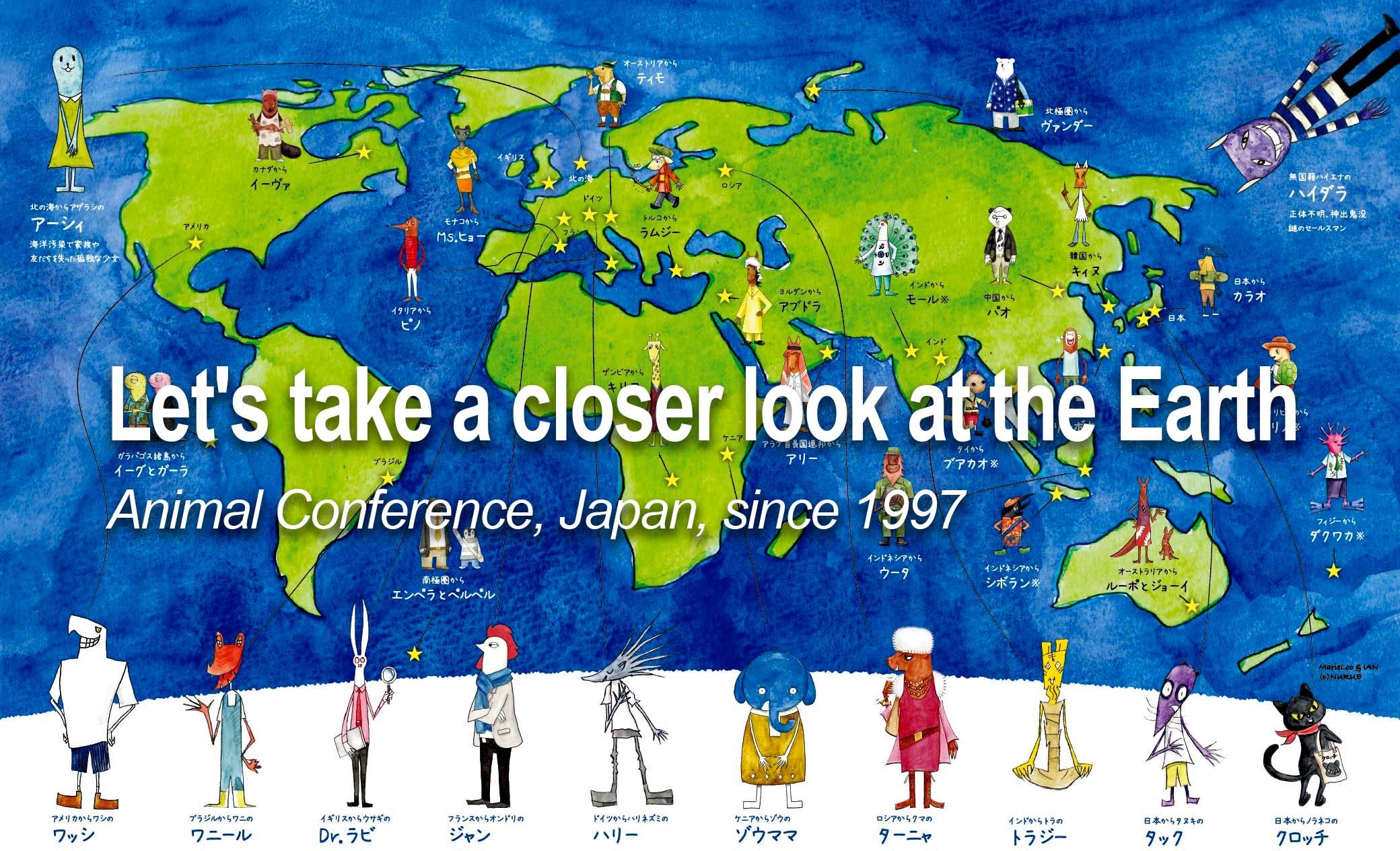
The SDGs and Animal SDGs
The Sustainable Development Goals (SDGs) were adopted by the United Nations (UN) in
2015 as a blueprint for building a better and more sustainable world, with a total of 17 Goals and a target year of 2030 set for their achievement.
Where we stand now, about halfway through that timeline, what seems apparent is that, essentially, the way of thinking behind the SDGs is inextricably anthropocentric; that is, humancentered. Moreover, it seems that among people living lives of relative comfort and societal movers and shakers with ties to political institutions or industry and the like, there is the view that it may be feasible to reach the targets without making
appreciable changes to the status quo.
Who, though, stands to suffer the consequences of the deepening crisis of environmental change? The children: future generations. Each of the Goals, then, from the first all the way up through the 17th, must necessarily be defined not for the convenience of grown-ups living today, but in consideration of future generations (the children). So, let us append an 18th Goal to spell that out.
Beyond this further, however, humans are merely one of the myriad life forms inhabiting Earth, which by some estimates may number as high as 100 million species. Trying to fulfill the wants and needs of the over 8 trillion people now living in the world will surely alter the global environment and place tremendous stress on all of those animals and other life forms.
The Animal SDGs adopt non-human perspectives to envision how the UN’s Sustainable Development Goals, which have been drawn up by people, may appear as viewed from outside the human world.
The SDGs promise to “Leave No One Behind.” We must ensure by all means that the scope of this vow extends beyond just people living presently to include life in all forms that may come into being and inhabit this Earth in the future as well.

1/3 for ourselves (humans)
1/3 for the animals (nature)
1/3 for the future
This is a way of thinking common to indigenous peoples of the world who have lived symbiotically with nature
In a gallery at Lake Akan-ko in Hokkaidō is a big carving made by the late Ainu woodcarver Takeki FUJITO (1934–2018)
A commentary on the piece contains a dialogue between a Bear Spirit and a Salmon Spirit
Bear Spirit:
I think I’ll help myself to just one half of you,
I will.
Salmon Spirit:
In my old home river are offspring aplenty
I’ve left behind. I can go now with nary a regret,
I’d say. Have at me, old fellow.
Bear Spirit:
I won’t hold back then, I’ll scarf half of you right
up! And the other half I’ll leave in the forest to
share. Let the earth take in your nutrients, I will
Might we not be offered here a peek at the eat-orbe-eaten relationships that exist between fellow animals in the natural ecosystem ?
When did we begin to regard the Earth as ours alone and all the animals other than us along with the plants, even the minerals, as assets or resources belonging to us ?
Let us now once more spread the wings of our imagination, so to speak, and take an insightful look at humans' actions from the viewpoints of animals
October 2021
Animal Environment Conference Project
Our Suggestion 1
[ SDG18 ]
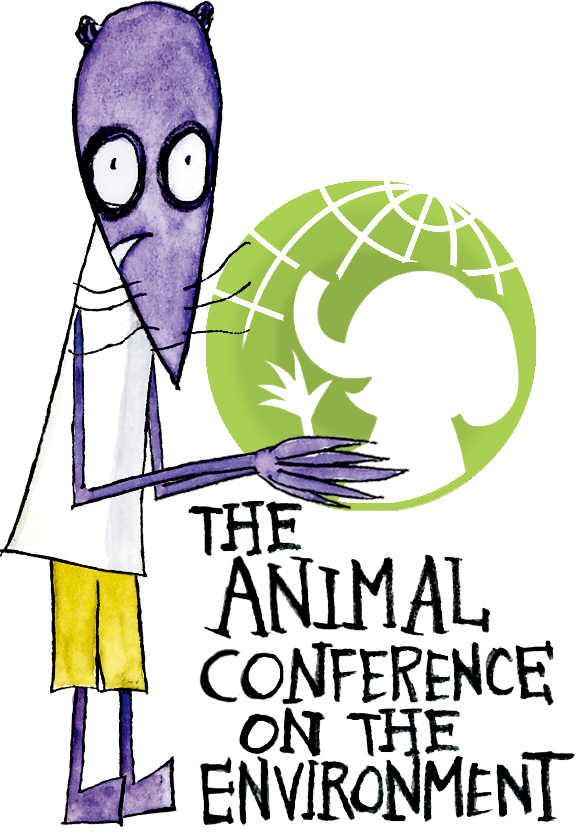

We propose to add
KIDS AS FUTURE GENERATION as SDG 18
Those who live in the future society are the present's children. So, SDG 18.
Let's make societies where grown-up children can live happily together with nature.
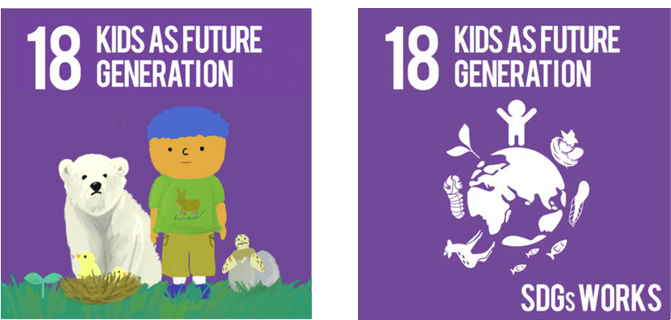
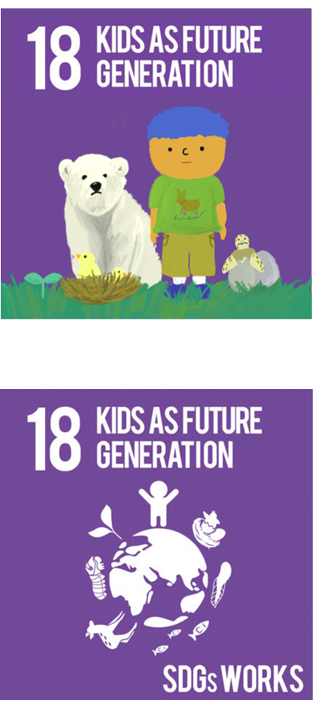
As with all animals, the future for humans is only in the children in front of us. The future beyond that is in the children of children’s children. Children are the future. And it goes without saying that it's not about your own children, but about every child in the world. If we think of a favorable future, it wouldn't make much sense for adults to think of their future.
All 17 items of the SDGs should be provided for children. Eliminating poverty is not something that can be solved by spreading money, but rather thinking about what to do to prevent all children from falling into poverty in the future. When it comes to preventing hunger, it is more important to create a system that allows children to eat and live properly than to provide several meals now. We must think carefully about what we should do for the future of our children, whether it is health or education, as precondition and we must discuss and act accordingly.
Never use the SDGs to maintain and expand your current business or structure. If it's a business that can't bring a positive future to children, it should be stopped immediately. If the current system does not lead to a favorable future for children, it should be dismantled immediately. The idea of improving or strengthening such things to make them sustainable is itself a betrayal of future children.
Even if the word Sustainable means be able to sustain, if you use it in the context of the global environment after the 1970s, If we continue to use modern civilization, social and economic systems any longer, we will not be able to sustain the natural environment of the earth. In other words, it must be understood that because it is unsustainable, it is necessary to design and realize alternative sustainable civilization, social and economic system.
Therefore, the SDGs cannot be considered apart from the natural environment and the future, which is children. As a premise for all goals from No. 1 to No. 17, let's add Let's create a society where children can enjoy themselves together with nature when they grow up!
Fumikazu Masuda
Our Suggestion 2
[ Let's talk to animals ]


Let's talk to the animals. And let's talk to the next generation of the world.
We propose a dialogue method for the The Animal Conference on the Environment.
Let's take a closer. Look at the Earth.
In order to protect the environment, we can't just leave it to humans! and animals gathered in the forest.
Together with children from around the world, the animals started a conference to think about environmental issues and coexistence while understanding the differences between people and countries.
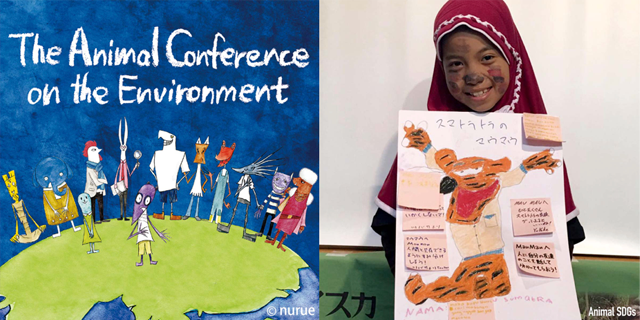
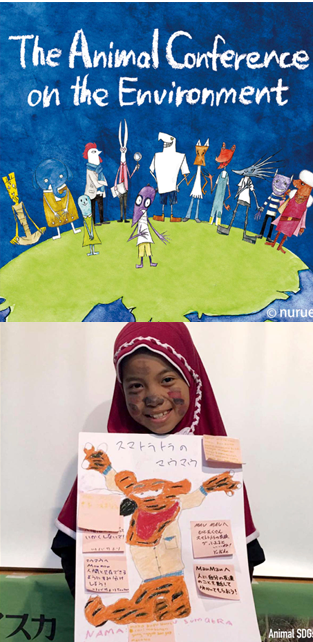
In the Asian Forest Zone of the Tokiwa Zoo (UBE City), you can observe the great apes, the white-faced gibbon, moving freely from branch to branch.
In Southeast Asia, the habitat of the white-faced gibbon, forests are being cut down and replaced by palm trees for the production of palm oil.
Humans may think that it is not a problem because the plants are planted after the trees are cut down.
However, the white-faced gibbon, which cannot hold on to the palm tree without branches, cannot migrate and its habitat is fragmented, resulting in a miserable situation.
Surprised by this situation, the children wondered why people needed so much oil.
Furthermore, when we learn that palm oil is used as a raw material for processed foods and detergents in our daily lives, we realize that we are the ones who are causing the suffering of the white-faced gibbon.
In this way, the zoo became the best place to learn and think about the SDGs (environmental issues) as one's own through an interactive workshop where one could actually observe and experience the white-handed gibbons.
Children, high school and university students, and even adults are participating in the interactive activity The Animal Conference on the Environment.
The children expressed their opinions, such as I gained a great insight by putting myself in the animals' shoes,I learned about the plight of animals that far exceeded my expectations and felt that I had to take action, and Animals and humans share the same precious life, as well as their unique ideas for saving animals, and their subsequent actions have changed.
In addition, adults can also deepen their understanding of the SDGs and environmental issues through dialogue with children.
Some countries are rich. On the other hand, some countries in the world become poor.
I enjoy a good life. I enjoy a happy life, while someone else in the world has to endure an unhappy life.
And the human race prospers. Meanwhile, animals are suffering and going extinct.
And the nature is being destroyed.
We believe that it is important to be aware of this relationship in order to think about the SDGs theme.
We need to have a lot of dialogue if we are to be able to use the power that only human beings now have to change the global environment and allow animals and the natural world to live in harmony with us.
Marie Loo & IAN


